Tom Seaver
Lost in all the offensive struggles is the fact that this Mets team is built upon pitching. As a franchise, the Mets always have and always will be built upon pitching. It started with Tom Seaver, Jerry Koosman, and Jon Matlack in the late 60’s. It was continued in the 80’s with Dwight Gooden, Ron Darling, Sid Fernandez, and David Cone. The mantle was supposed to be picked up this year by the Mets young rotation.
However, the rotation has had some struggles. Matt Harvey struggled mightily going 2-4 in May with a 5.91 ERA. To a lesser extent, Jacob deGrom struggled in May going 0-1 with a 3.86 ERA. The concern with deGrom was not so much the results but the seemingly precipitous drop in velocity. These were to the two aces the Mets road all last year and into the postseason. These were supposed to be the two aces this year leading the team while the younger starters developed. Instead, the reverse has been true.
Noah Syndergaard has taken the next step this year. He is 5-2 with a 1.84 ERA and a 0.958 WHIP. He is throwing fastballs up and over 100 MPH, and more impressively, he is throwing sliders around 95 MPH. He is as dominant a pitcher as there is in baseball right now.
Steven Matz was named the National League Rookie of the Month for the Month of May. It was a well deserved honor after going 4-0 with a 1.83 ERA and a 0.757 WHIP. In fact, if you take away his first nightmare of a start, a start he made after a long period of inactivity, Matz is 7-0 with a 1.51 ERA and a 0.932 WHIP. Matz has been the pitcher everyone has imagined he would be and more since he burst onto the scene last year beating the Reds from the mound at the plate.
Overall, Syndergaard and Matz have taken the next step. On almost any other rotation, they would be the unquestioned ace. That was the same thing that has been said for Harvey and deGrom. On that front, there is some great news as well. In Harvey’s last start, he went seven innings allowing only two hits, no runs, and one walk with striking out six. In deGrom’s last start, he went seven innings allowing five hits, one run, and two walks while striking out 10. More importantly, deGrom’s velocity is returning with him getting his fastball up to 96 MPH.
So yes, it appears like the 2016 Mets are continuing the franchise’s legacy of having great pitching. With Syndergaard and Matz being ahead of schedule in their development coupled with Harvey and deGrom starting to return to last year’s form, the Mets rotation is stacked with four aces. If you’re a baseball player or a poker player, you know four aces is next to impossible to beat no matter whatever else you have in your hand . . . even if that hand contains the deuce that the Mets offense was over the month of May.
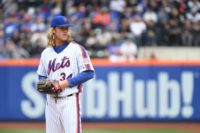
In 1986, the Mets were lead by two immensely talented players. The first was a 24 year old outfielder named Darryl Strawberry. Coming up, he was thought to be the next Ted Williams. Joining him was a 21 year old young ace named Dwight Gooden. Gooden was unhittable and was starting to do things not even Tom Seaver had done.
Thirty years later, we celebrate these players and their contributions to the Mets last World Series victory.
Yesterday, there was no greater tribute than seeing 23 year old Noah Syndergaard and 23 year old Michael Conforto lead the way. They were wearing the old racing stripe jerseys to boot.
Syndergaard pitched seven innings allowing only six hits, one unearned run, and no walks while striking out 11. This year he’s 5-2 with a 1.94 ERA, a 0.978, WHIP, and an 11.3 K/9. He’s doing things not even Dwight Gooden or Tom Seaver have ever done:
Noah Syndergaard: 1st pitcher in Mets history to have 10 K, 0 BB, and 0 earned runs allowed in back-to-back starts pic.twitter.com/PXWlqIgtjj
— ESPN Stats & Info (@ESPNStatsInfo) May 23, 2016
Part of the reason he earned the win yesterday was due to Conforto’s homer in the first inning.
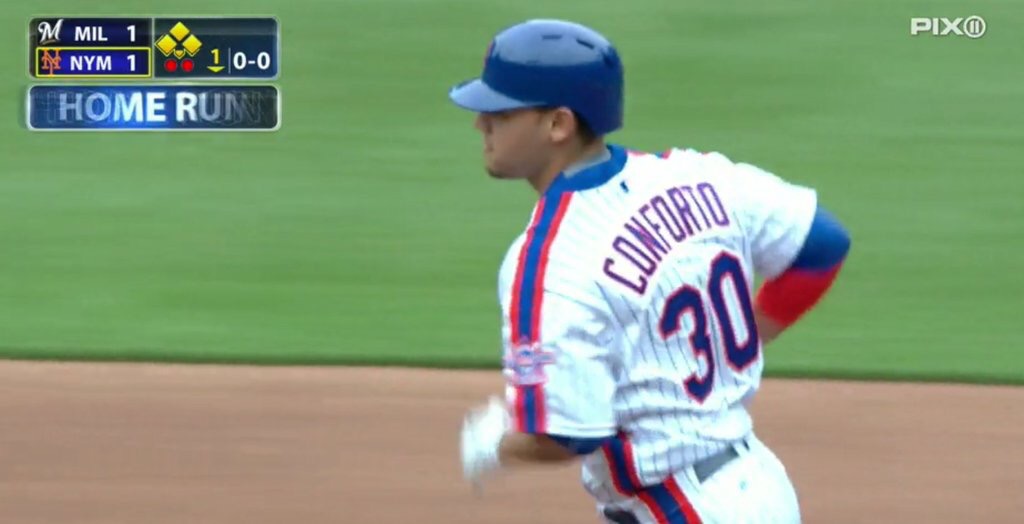
For the second year in a row, Conforto is showing no moment is too big for him. He has shown himself to be a natural born hitter. This year he’s hitting .284/.358/.553 with eight homers and 24 RBI. He has an astounding 146 OPS+.
Overall, thirty years later the Mets are once again led by two budding superstars in their early twenties. History is repeating itself. Hopefully, history will keep on repeating itself straight through October.
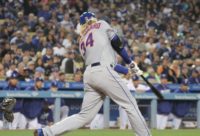
Move over Walt Terrell. Noah Syndergaard “hammered” two homeruns:
#HRDerby with @Mets pitchers … who you got?https://t.co/Kmv2E5YmvR #PitchersWhoRakehttps://t.co/WKEQErjbOu
— MLB (@MLB) May 12, 2016
The two homers were more impressive than originally thought:
Noah Syndergaard's homers registered 407 & 400 feet. He's the only pitcher in the majors with three 400+ homers since his debut 365 days ago
— Adam Rubin (@AdamRubinMedia) May 12, 2016
https://twitter.com/bbtn/status/730608220738322432
The second homerun was after Syndergaard failed to bunt the runners over. With two strikes, he then swung away hitting his second homerun of the game. At the plate, Syndergaard went 2-3 with the aforementioned two homers and four RBI (which also tied a Mets record for most RBI in a game by a Mets pitcher). Syndergaard might’ve struck out in the sixth with the bases loaded, but he certainly got his hacks in. He was trying to hit that’s third homer, but it was for naught. He also struck out on the eighth while swinging for the fences.
Interstingly enough, Syndergaard was responsible for four homeruns. While he hit two, he also allowed two. The first was hit by Corey Seager in the third and Yasmani Grandal in the fourth. Other than those two homers, Syndergaard shut down the Dodgers. He pitched eight innings allowing six hits, two earned, and one walk with six strikeouts. Jeurys Familia pitched the ninth to preserve the 4-3 win he’s now a perfect 12/12 in save chances.
Overall, you know it’s a good game when your dominance on the mound is little more than a footnote. For Syndergaard’s next game, he had some big shoes to fill. Tom Seaver and Ron Darling are the only two Mets’ pitchers to homer in consecutive starts. Interestingly enough, the Mets received Terrell and Darling in exchange for Lee Mazzilli. As we know, Syndergaard was involved in a pretty big trade himself.
Game Notes: It appears Rene Rivera is becoming Syndergaard’s personal catcher. It’s a good solution to Syndergaard’s problem with base stealers. David Wright sat with what was either normal rest or a sore shoulder. Eric Campbell got the start over a slumping Wilmer Flores. Both Campbell and Yoenis Cespedes would steal a base. Coming into the game, the Mets had only stolen eight stolen bases. Neil Walker returned to the lineup for the first time since bruising his shin.
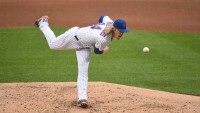
The late, great, Hall of Fame Manager Earl Weaver used to say, “Momentum? Momentum is the next day’s starting pitcher.” With that said, the Mets should have momentum all throughout 2016.
With a 2-4 start, it hasn’t always worked out that way, but tonight Mets fans get to see Noah Syndergaard take the mound. Last time we saw him, he was doing things like this:
GIF: Did we just witness @Noahsyndergaard throw a 95 MPH SLIDER?! pic.twitter.com/v5BGdNGKLp
— Nick Pollack (@PitcherList) April 5, 2016
He’s become unhittable. He makes you want to jump out of your chair and scream:
Fact is, whenever you have Thor on the mound, your team has momentum. They can go out there and beat the ’27 Yankees. They can go out there and beat the Big Red Machine just like Tom Seaver, Jerry Koosman, and Jon Matlack did. When any member of a power triumvirate of Mets pitchers takes the mound, you have to like your chances of winning. You’ve got momentum.
Tonight, momentum, thy name is Thor.
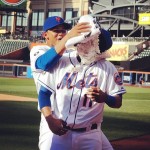
In honor of Pi Day, let’s look at all the things to look forward to during the 2016 season:
3.1 – Mike Piazza
This summer Mike Piazza is going into the Hall of Fame as a Met. He’s the first Mets position player to do so. The following weekend, he will also be the first Mets position player to have his number retired. He will forever be remembered for all of his homeruns, especially the homerun after 9/11. More importantly, he will forever be a Met.
41 – Tom Seaver
Seaver is the greatest Met to ever wear the uniform, and perhaps, the greatest right handed pitcher of all time. He was rightly dubbed “The Franchise.” With him, he began the aura of the Mets always having good pitching. This year his mantle will be picked up again by a dominant young staff reminiscent of the pitching staffs Seaver was a part of back in his day.
59 – Antonio Bastardo
Bastardo is one of a few key free agents the Mets added this offseason. Last year, the Mets had bullpen problems forcing them to overuse Jeurys Familia and trade a lot of good young pitching away to build a bullpen around the trade deadline. This year, Bastardo is a key arm in what appears to be a bullpen worthy of holding down the leads handed to them from their dominant starting pitchers.
26 – Kevin Plawecki
Plawecki had a rough 2015 whether it was because of him being rushed to the majors too soon or him needing sinus surgery. Given Travis d’Arnaud‘s injury history, it is very possible Plawecki is going to get another shot at being the Mets starting catcher next year. At some point, he will be called upon to not only continue his tremendous work as a receiver, but also being a more potent bat to the Mets lineup.
5 – David Wright
The biggest question mark in the 2015 season is how much David Wright can play and how effective he can be over the course of a 162 game season. Wright is the team leader and Captain, and they’re going to need him. At the end of 2015, he showed he can still hit and be an important part of the Mets. They’re going to need him at some point next year.
35 – Logan Verrett
After losing Verrett in the Rule 5 draft last year, he’s back with the Mets organization. Last year, he was an important swing man. He was first a bullpen arm and later a spot starter who gave a young pitching staff some rest before the postseason. In 2016, Verrett is likely to serve a similar role regardless of where he starts the year. At some point, the Mets will need him, even if it’s just to get the starters some rest before another postseason run.
89 – The Closing of a Window
After the Mets lost in the 1988 NLCS, there was no reason to believe that was the end of their window. There were veterans on the team, but there were also prospects behind them and rising stars on the team. There was still the pitching. It’s a stark reminder that when the window is open, you do everything you can in that timespan. You never know when that window closes.
79 – Paul Sewald
Sewald is just one of a number of Mets pitching prospects who are chomping at the bit to get called-up to the majors. Sewald has had a 1.83 ERA in his entire minor league career. If he continues pitching this well, he very well might get a call-up in the event there is an open bullpen spot this year.
32 – Steven Matz
In Matz’s first two career starts, he was incredible on the mound and at the plate. Even after his injuries, he has shown flashes of brilliance. He’s an early leader in the Rookie of the Year race. He’s primed to become the next great Mets starting pitcher. In 2016, he needs to stay healthy and take that next step.
38 – Dan Warthen
Warthen and the entire Mets organization have been blessed with amazing pitching. It’s encumbent upon Warthen to not only help each of these pitchers take the next step in their development, but also to help keep them healthy over the course of a full season.
4 – Wilmer Flores
We end with Flores, who was the last Mets to bat in the 2015 World Series. Flores was the player who cried at the possibility of leaving the Mets to a fan favorite. He has gone from the starting shortstop to a utility/platoon player. The 2016 Mets are a heavy left-hand hitting team. Flores can balance this out in his role as a super sub.
He’s also the first choice for third base in the event that Wright needs to sit or go on the DL for long stretches of time. He’s the primary backup at every infield position. He’s going to be an extremely important piece for the Mets.
They are all important actually. As we saw in 2015, a team will have to go deep into their roster at times. However, by building a strong 25 and 40 man roster, as the Mets have now, you give your team the best chance to make it to the postseason. Hopefully, the Mets can come full circle (pi pun) in 2016, and win the World Series.
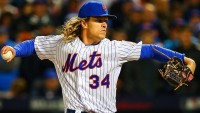
Going into the 2016 season, there is one fear each and every Mets fan has. We dare not speak its name, but that doesn’t change the fact that it’s still present. That fear is that a pitcher will get seriously injured.
Looking at this year’s list of pitchers who could befall the dreaded “Verducci Effect,” Noah Syndergaard headlines that list. If Syndergaard was to suffer a season ending injury requiring Tommy John surgery? it would greatly hinder the Mets chances of winning not only the World Series, but also making it to the postseason. It’s something that not just Mets fans fear, but as Anthony DiComo of MLB.com reports, Syndergaard fears it also:
I’ve thought about it quite a bit. But I trust myself to put my body in the right situations to be able to perform at a healthy level.
The fear is justified. Syndergaard threw 65.2 innings more last year. He throws over 95 MPH more than anyone in the game. He’s working to add the fabled Warthen Slider to his already dominant repertoire. Name a risk factor for UCL years requiring Tommy John surgery. Syndergaard meets most if not all of them.
One risk factor not readily discussed is the team he plays for. Look at the projected Mets rotation when healthy: Matt Harvey, Jacob deGrom, Noah Syndergaard, Steven Matz, and Zack Wheeler. Put aside Syndergaard for a moment. What do the other four have in common? They are all hard throwing pitchers under the age of 30 who have already had Tommy John surgery.
Go outside this group. Since Warthen took over as the Mets pitching coach, the following homegrown Mets have sustained arm injuries: Jon Niese (shoulder), Dillon Gee (shoulder), Jeremy Hefner (two Tommy John surgeries), Rafael Montero (shoulder), Bobby Parnell (Tommy John), Josh Edgin (Tommy John), Jack Leathersich (Tommy John). There are more, but you get the point.
Now, is this an organizational problem since Warthen took over, or is it just bad luck? Could this all have been avoided? Back in the 60’s and 70’s the Mets developed pitchers like Tom Seaver, Jerry Koosman, Nolan Ryan, and Jon Matlack. These pitchers threw more innings than the pitchers today, and yet, Matlack was the only one of this group that suffered an arm injury.
In the 80’s, the Mets had Dwight Gooden, Ron Darling, Sid Fernandez, Rick Aguilera, Randy Myers and David Cone. Of this group, only Doc and Cone had arm issues. It should be noted that Doc had many other issues as well, and Cone’s problem was an aneurysm later in his career.
In the 90’s, Generation K was a bust, and the Mets haven’t developed the caliber of starting pitchers like they have in the past until now. However, this generation seems to befall injuries far more often than their predecessors. Is it organizational? Is it bad luck? Is it preparation? For his part, Harvey wonders what if:
I think now, there are things I could have done better in high school or in college to maybe prevent it. But I don’t know. I’m not saying [Syndergaard] works that much harder than everybody else, because we all work hard. I think as time progresses, guys pay more attention to stretching the shoulder, strengthening the shoulder. If I could go back — I don’t know if this would’ve prevented me from having [surgery], but if I could go back and really do 20 extra minutes of stretching and arm care, you never know what could happen.
That’s the thing. We really don’t know why one guy suffers elbow and shoulder injuries while others don’t. Is it preparation? Is it good genes? Is it just good luck? Much time, energy, and money has been spent on this issue, and yet pitchers still get injured. Pitchers get injured despite teams doing everything in their power to try to prevent it.
It will help Syndergaard being in a clubhouse with players who have had Tommy John surgery. They each will have advice for him on why they suffered the injury and what they could’ve done differently. More importantly, Syndergaard appears to be a hard worker who takes the health of his arm very seriously. There is no doubt he is doing everything he can do to avoid the dreaded Tommy John surgery.
Based on what we’ve seen, if anyone can avoid it, it’s him.
Editor’s Note: this article was first published on metsmerizedonline.com
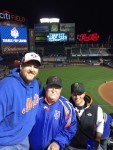
Terry Collins grew up watching baseball in an era when you had batting average, homeruns, and RBI to judge hitters. There was W-L record, ERA, and strikeouts to judge pitchers. Back then, utilizing the eye test was justifiable as there was no way to really quantify all you are seeing.
It’s important to keep this in mind when analyzing Terry Collins’ opinions on advanced statistics:
It’s become a young man’s game, especially with all of the technology stuff you’ve got to be involved in. I’m not very good at it. I don’t enjoy it like other people do. I’m not going to sit here and look at all of these [expletive] numbers and try to predict this guy is going to be a great player. OPS this. OPS that. GPS. LCSs. DSDs. You know who has good numbers? Good [expletive] players.
This quote reminds me of when I talk baseball with my Dad. He’s actually two years older than Terry Collins.
Whenever I talk to my Dad about baseball, I sometimes refer to advanced statistics. I will refer to WAR, FIP, UZR, etc. When I refer to them, he looks at me incredulously. He doesn’t know what they are. He doesn’t understand them. He asks me how to calculate them. I will give him a cursory explanation, but I can’t give him the exact formula. He can’t sit down and calculate it with his calculator. He’d rather talk about the statistics in which he’s more conversant.
The strange thing is I became interested in part due to my Dad. Growing up, he always told me to take W-L record with a grain of salt. He told me OBP was more important than batting average. He told me this in the 80’s! Back then merely suggesting that was heresy.
Now, we’re well beyond OBP and ERA being the advanced statistics to analyze. In many ways, Terry Collins is right. The game of baseball has passed them by. These newfangled statistics really are for a younger generation. Yet, we can all still enjoy baseball in our own way.
We don’t really need advanced statistics to tell us Matt Harvey is a really good pitcher. Yes, advanced statistics will support that conclusion. I love sitting there and watching games with my Dad. I remember in 2013 when he said that he expected Matt Harvey to throw a no-hitter every time he goes out to pitch. One night, we were there when it almost happened.
I love hearing my Dad tell me about how impossibly great Tom Seaver was. I love hearing him tell me that despite that he wanted Jerry Koosman on the mound for a big game.
So yes, how we analyze the game has changed since my Dad was a kid. Not to mention that teams are even trained differently from the days of old, with new technology and tools like the baseball swing trainer V2 and others available for anyone who aspires to be a solid player. It still doesn’t mean he doesn’t know a great player when he sees one. It doesn’t mean he doesn’t have a wealth of knowledge when it comes to the game of baseball. It doesn’t mean I don’t love talking baseball with him.
There will come a time when there are new statistics I won’t understand. I’ll be too old and set in my ways to learn the new ones. My son will roll his eyes at me when I refer to someone’s WAR or UZR. There’s going to be new statistics that will make all I think I know obsolete. That’s fine as long as we’re talking baseball (hopefully about his career). That’s all that matters.
No matter what happens, no matter what new statistics arise, the game never passes you by. As long as there are fathers and sons talking baseball, the game will belong to each and every generation. It will be a shared experience.
With that said, hopefully one day, my son will be able to explain to me what LCS and DSD is before I begin ignoring all thess newfangled statistics.
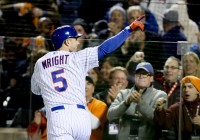
When David Wright came up in 2004, we thought every year was going to be like last year. Much like this year, we anticipated that each and every year Wright manned third base, the Mets would contend for a World Series.
As we know, it didn’t happen that way. A lot went wrong. The Mets came ever so close in 2006. They collapsed in 2007 and 2008. A poorly designed outfield, poor personnel decisions, and financial crisis ensued. Then, as things began to turn around, Wright injured his hamstring. Then he was diagnosed with spinal stenosis. Last year was his first trip to the World Series. This year may be his last year as a key contributor on a World Series team.
It could also be Wright’s last year to build his Hall of Fame credentials.
Third base is the least represented position in the Hall of Fame. Accordingly, standards are high to enter the Hall of Fame as a third baseman. The average of 13 Hall of Famers at the position had a career WAR of 67.5, a WAR7 (best seven years combined) of 42.7, and a JAWS of 55.1. Looking at the stats, Wright falls short. His career WAR is 50.1. His WAR7 is 40.0. His JAWS is 45.1. For a player that Mets fans believed would be a Hall of Famer, he now has an uphill climb.
WAR7
Looking at theses factors, it’s presumably easiest for Wright to increase his WAR7. To do so, he would need to have one year where he accumulates 2.7 more WAR that his seventh best season. Here are his seven best WAR seasons:
- 2007 – 8.3
- 2012 – 7.0
- 2008 – 6.8
- 2013 – 5.9
- 2005 – 4.8
- 2006 – 4.1
- 2009 – 3.2
For Wright to put his WAR7 within range, he would need to have one more season that is 5.9 or better. Wright last did that in 2013. That year Wright only played on 112 games. He hit .307/.390/.514 with 18 homers and 58 RBI. His 156 OPS+ was the best of his career. In that season, Wright missed a significant amount of time with a strained hamstring. Sounds just like his April 2015 hamstring injury that wouldn’t heal.
The Mets are hopeful that Wright can play 130 games in 2016. Judging from Wright’s 2013 season, it is certainly possible that Wright can have a 5.9 season again. A better and much stronger Mets lineup will assist him in that task.
Cumulative WAR
Going into the 2016 season, Wright has a career WAR of 55.1, which is presumably 12.4 behind the 67.5 career WAR he would need to be enshrined in the Hall of Fame.
This is where things may get a little tricky for Wright’s chances. Don Mattingly had back problems, and his once promising Hall of Fame career was over at 34. Lenny Dykstra had spinal stenosis, and his career was over at 33. David Wright is entering his age 33 season. Based on other player’s careers, he’s near the end of his career. If Wright plays past his age 34 season, he will be in uncharted territory.
Naturally, it is safe to assume Wright will not have a 12.4 WAR season thereby cementing his Hall of Fame case. To do that, Wright would have to match Babe Ruth‘s 1927 season when he hit 60 homeruns. No, if Wright is going to accumulate the needed 12.4 WAR, he’s going to have to remain healthy and effective. He’s going to have to manage his spinal stenosis.
Wright is currently signed until 2020. There are $90 million reasons why Wright will do all he can to finish that contract.
Presuming Wright does do that, he has five more years left in his career. In order to attain the necessary 12.4 additional WAR, Wright will have to average a 2.5 WAR a year for those five seasons.
In 2014, Wright played 134 games, and he was a 2.7 WAR player. In that season, he hit .269/.324/.374 with eight homers and 63 RBI. If Wright manages his back, and his treatments are effective, seasons like this over the next five years are certainly attainable.
Other Criteria
As Wright’s peak is over, there really isn’t anything he can do to improve his JAWS. With that in mind, we need to look at other areas that would improve Wright’s Hall of Fame case.
Unfortunately, he will be unable to surpass Mike Schmidt‘s 548 homeruns or even reach the once magic number 500 homeruns. He won’t catch Chipper Jones‘ 1,623 RBI. He won’t catch Brooks Robinson‘s 16 Gold Gloves at third base. It does not appear Wright will reach 3,000 hits as he would need to average 250 hits over the next five years to reach that number. No, it seems like the only thing that will help Wright is the narrative.
The best thing going for Wright is the fact that he will most likely play his entire career as a Met. Aside from Tom Seaver, Wright is making a case as the best player to ever play for the Mets. Here are his Mets rankings:
- Games Played – Second (307 behind Ed Kranepool)
- Runs – First
- Hits – First
- Doubles – First
- Homeruns – Second (17 behind Darryl Strawberry)
- RBI – First
In addition, Wright’s 50.1 WAR with the Mets is the second most any player has accumulated with the Mets; the most accumulated by any Mets position player. Even with Mike Piazza‘s recent election to the Hall of Fame, it appears that Wright is the team’s best position player.
So overall, Wright still has a legitimate shot at the Hall of Fame. His name will be atop all the major offensive catergories. His WAR and other catergories will put him on the cusp of election. A strong 2016 will get him a lot closer to those goals.
Winning a World Series in 2016 can’t hurt either.
Editor’s Note: this article also appeared on metsmerizedonline.com
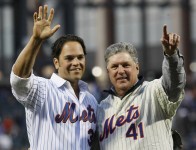
There are two things that are usually true about my birthday: (1) it always rains on my birthday; and (2) the Mets are not usually playing at home on my birthday. When the Mets are home on my birthday, the rain usually wrecks havoc with the Mets home game.
I was thinking about this when the Mets announced Mike Piazza Weekend. I’m assuming that entire weekend will be sold out. I know it was difficult getting good seats to the Saturday night retirement ceremony. As an aside, I would’ve retired Mike Piazza‘s #31 on July 31st instead of the 30th. Not a big deal, but just a quirk I noticed that will eventually drive either me or everyone else around me to a mental institution. I digress. It’s going to be awesome to see the fans come out the entire weekend. It’s a testament to how much we love Piazza and how good the 2016 Mets will be.
The entire weekend will be a celebration of Mike Piazza and the current Mets team. It’s a far cry from what Tom Seaver received when he had his Tom Seaver Night the year he was inducted into the Hall of Fame.
There are birthdays we have that always stand out in your mind, and August 12, 1992 is one of them. I got one of those newfangled CD players. I got to rock out to such musical visionaries as C&C Music Factory. Oh and by the way, it rained. Boy oh boy did it rain. Water was getting into the house. Seriously, 100 times out of 100 they call this game. However, there was zero chance the Mets were going to call this game because it was Tom Seaver Hall of Fame night. It was the night Seaver was going to receive his Hall of Fame ring in a pregame ceremony.
I know I was the only one in my family who wanted to go, but guess what; it was my birthday so we went. Seriously, my mother must’ve tried to talk me out of it like 41 times. Eventually, we went out. I remember on the way to Shea Stadium, the windshield wipers were at their highest setting, but it didn’t matter.
We made it to Shea Stadium in time for the ceremony. The announced attendance was 20,488. During the ceremony, there must’ve been a couple of thousand, and most of them were in the back rows of the Lodge and Mezzanine. The fans were mostly driven away by the rain. They were also driven away by a terrible Mets team. You might also remember them as The Worst Team Money Could Buy.
On that night, they were Terrific. In his third career start, Eric Hillman pitched eight scoreless innings against the hated Pirates. That night Hillman was every bit the 6’10” giant we thought he could be. That night at least Seaver was honored with a great pitching performance because he certainly wasn’t honored with the type of fan turnout he deserved.
Piazza won’t have that problem. Piazza will get three straight sell-outs and a good Mets team. I’m sure not even the rain could keep people away. I know it won’t stop me.
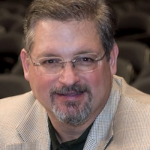
As we have seen throughout their history, the media has had a profound impact on the Mets. We first saw it with Dick Young’s columns leading to Tom Seaver demanding a trade. There were the days of Mike and the Mad Dog bringing Mike Piazza to the Mets. Dick Young has since passed, Mad Dog Chris Russo is on Sirius XM, and Mike Francesca has announced he’s leaving WFAN in 2017.
It appears the torch has already been passed to Mike Vaccaro. If you’re asking who Mike Vaccaro is right now, newspapers are in bigger trouble than advertised. With that said, Mike Vaccaro is the preeminent sports columnist in New York. A July column of his secured his place amongst the greats.
Back in July 2015, Mets fans were subjected to Eric Campbell and John Mayberry, Jr. hitting the in the middle of the lineup. Mets fans were clamoring for a trade. Sandy Alderson mocked Mets fans referring to New York as “Panic City.” Mike Vaccaro called it what it really was, “Malpractice.”
He kept the heat on up until the trade deadline. He questioned if the front office was a fraud. He called the lineup an indictment of Sandy Alderson. He called the Mets willfully ignorant. He said the Mets were not committed to making the team better. He kept the heat on the Mets. He wasn’t saying anything different than every Mets fan was at the time. It’s one thing for Mets fans to hoot and holler on Twitter. It’s another thing for a respected columnist to say it.
The Mets began a relative flurry of trades before the non-waiver trade deadline acquiring Tyler Clippard, Kelly Johnson, Juan Uribe, and Yoenis Cespedes. Whether you thought the trades were good, bad, or ugly, this series of trades changed the narrative about the Mets. I’m sure a number of factors went into those decisions, but I’ll never discount the public pressure. I’ll always appreciate that Mike Vaccaro for being the lead voice. Anytime you have a cause, no matter how relatively insignificant, it’s always beneficial to have a well respected voice leading the way.
By the way, when you were upset with the offseason, so was Mike Vaccaro. He called out the Wilpons for being cheap. Again, he said exactly what you and I were thinking. Again, the public pressure was ratcheted up. Then it happened. The Mets re-signed Yoenis Cespedes. They expanded payroll to make it commensurate with revenues and the market in which they play. In the end, that’s all that Mets fans were asking of ownership.
We can all parse through who gets credit for all of this, and I’m sure there’s enough credit to spread around to everyone. However, I don’t think anything resonated quite like the Malpractice column. At least to me, it was a seminal moment.
A large part of Dick Young’s legacy was his columns which caused Seaver to demand a trade. With it came some awful baseball and an empty Shea Stadium. Part of Mike Francesca’s legacy was the Mike Piazza trade, and by extension, Piazza entering the Hall of Fame as a Met. Right now, part of Mike Vaccaro’s legacy is Yoenis Cespedes being a Met. The rest of that story is yet to be written. When it is written by Mike Vaccaro, it will be a must read.
In any event, Yoenis Cespedes is still a Met, and for that, I say, “Thank you Mike Vaccaro.”